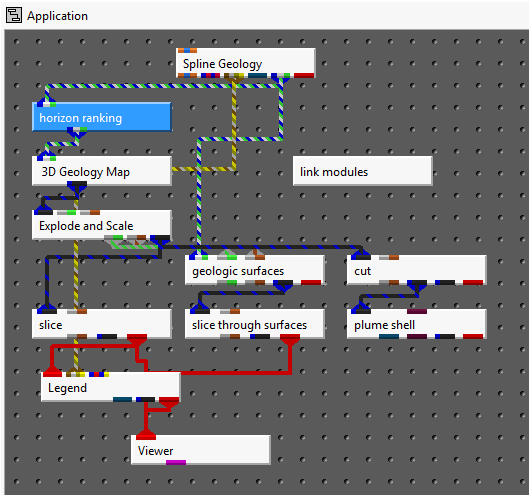
When we consider the dramatic difference between the Normal and Reversed Hierarchy results from the preceding topic, it may seem that we don't need any more control, but that would be too limiting.
In our original starting application view, the bottom of Silt (top of Clay) intersect two horizons which are higher in the hierarchy. Normal hierarchy gives both of these surfaces higher priority and Reversed hierarchy makes both lower priority.
What if we want more control of the individual surface priorities or rankings?
The horizon_ranking module provides this extra control. It allows you to set the individual ranking or priority for all horizons. For the model in this workbook, insert it as shown below (also disconnect plume_shell and return Explode_Distance to zero.)

The default setting of horizon_ranking are equivalent to Normal hierarchy:
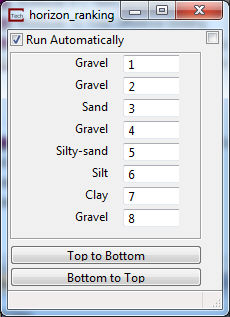
The Top to Bottom button returns the rankings to their default values as shown above (1 on top)
The Bottom to Top button reverses the ranking and is equivalent to reversed hierarchy
Setting the (bottom of) Silt horizon to a higher priority will allow it to intrude into higher layers. Setting the value to 1:
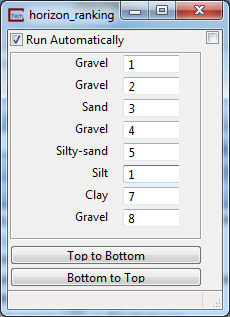
is equivalent to reversed hierarchy in this example:
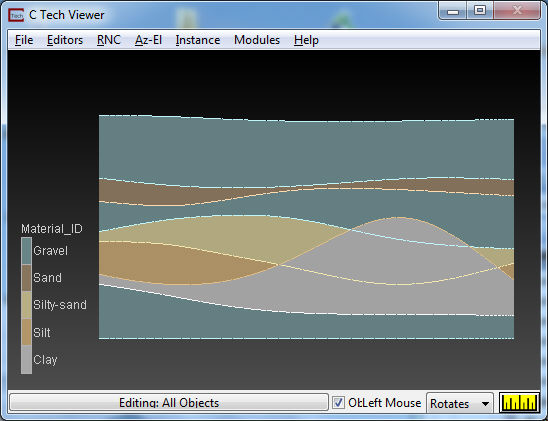
However, setting Silt to 5 provides a unique level of control:
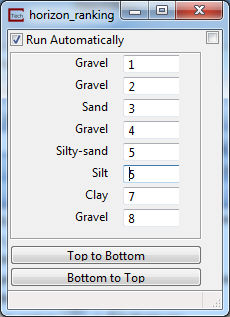
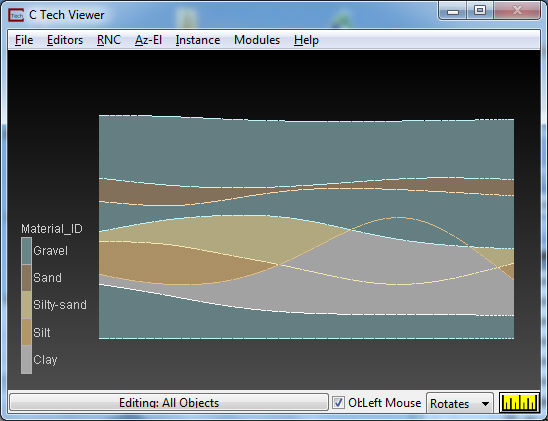
Note that with these settings, the clay layer penetrates the Silty Sand, but does not intrude into the Second Gravel.
This detailed control allows us to model a geologic system where clay and silty-sand were eroded before the second gravel was deposited.
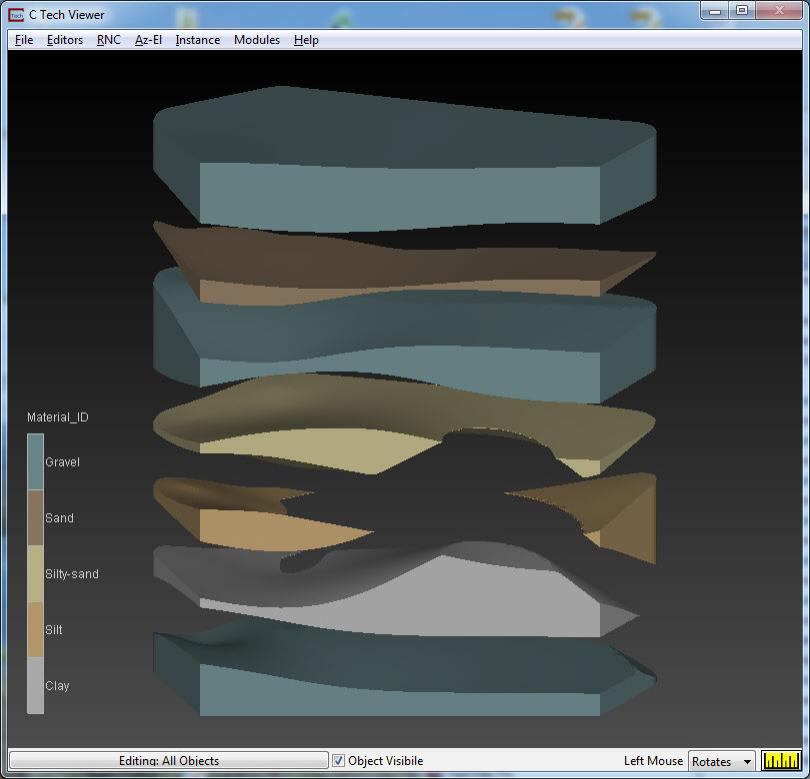
Moving the cut surface so the entire model is visible and viewing from the South gives:
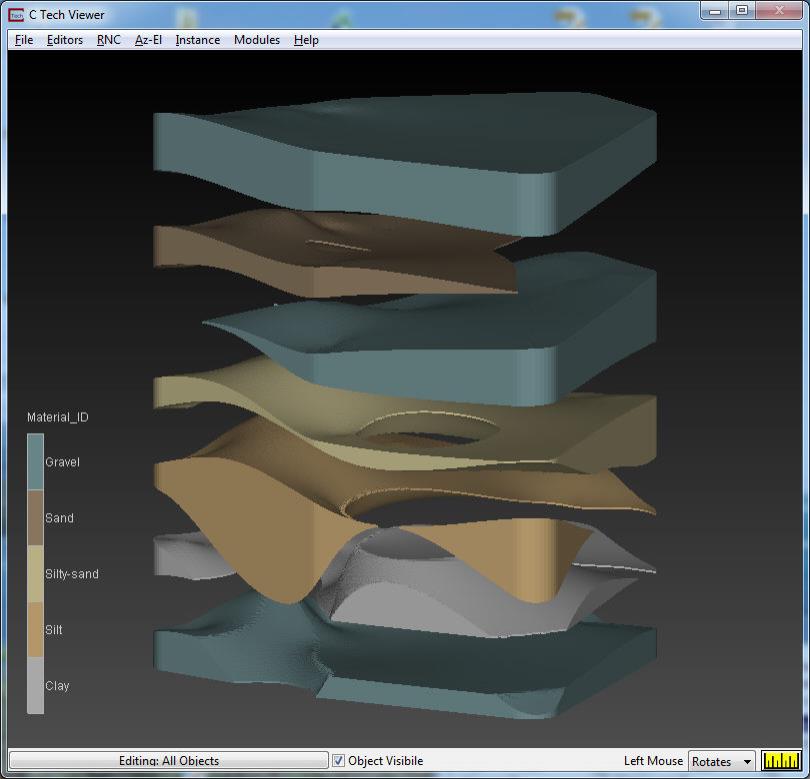
© 1994-2018 ctech.com